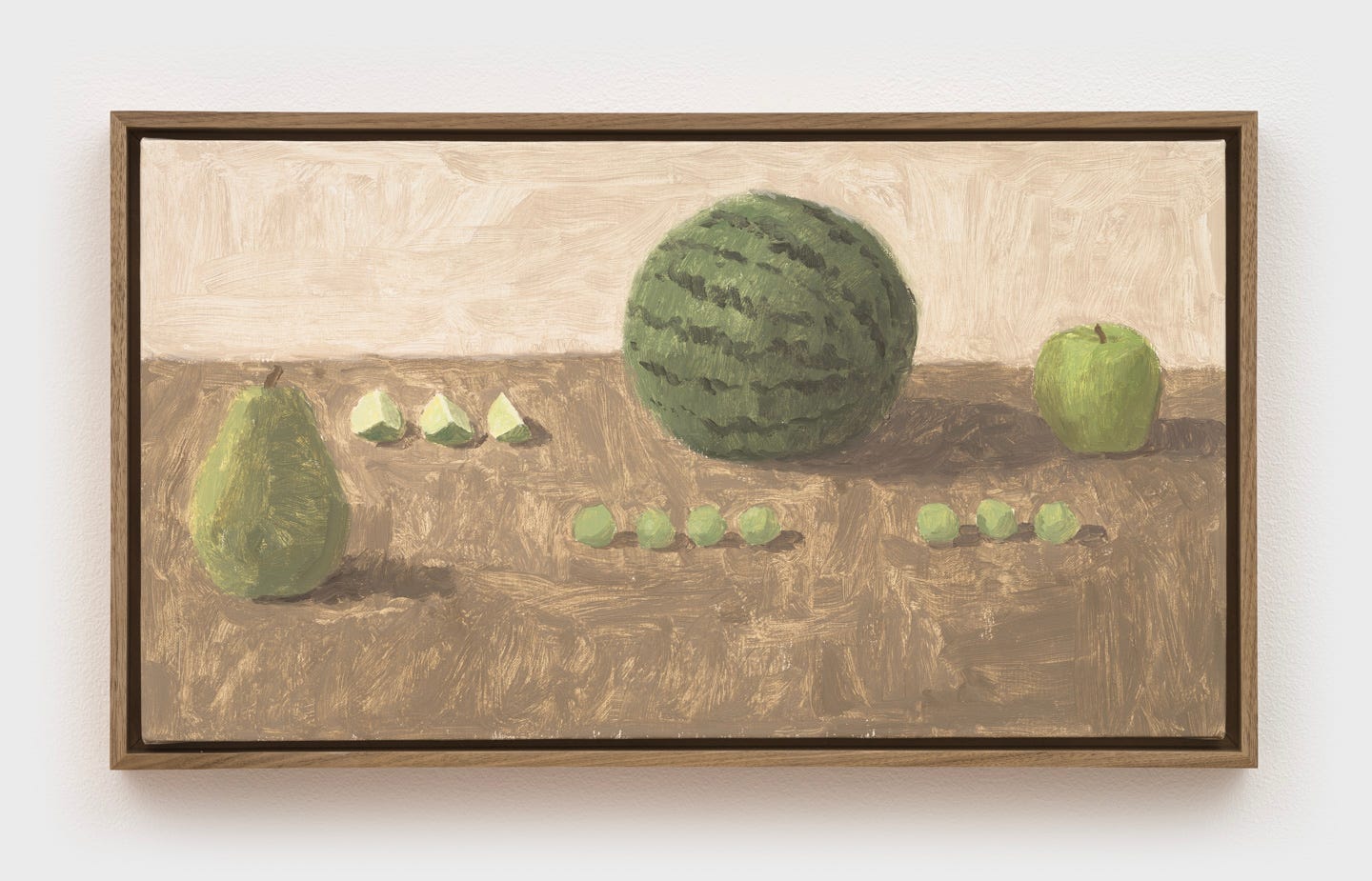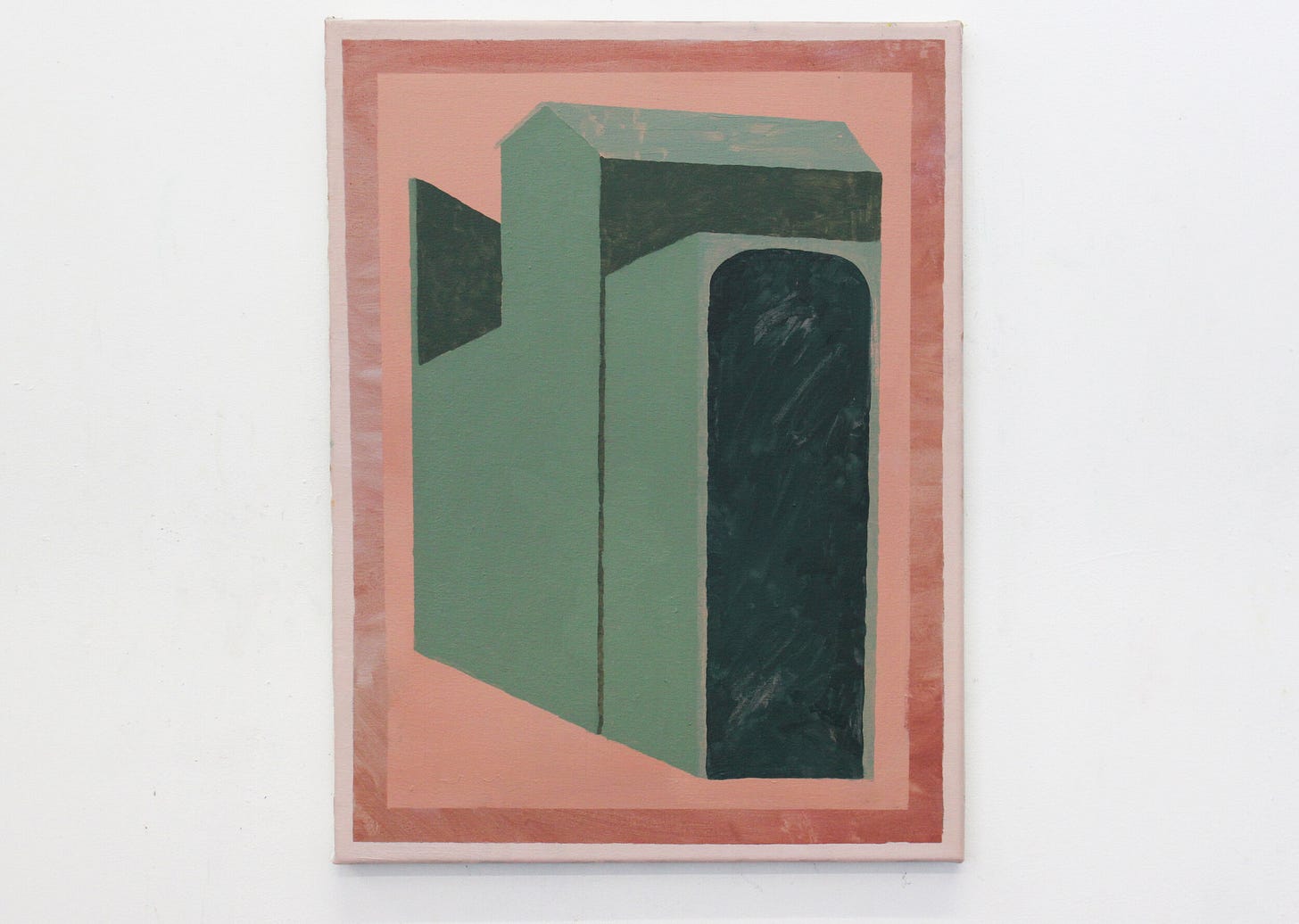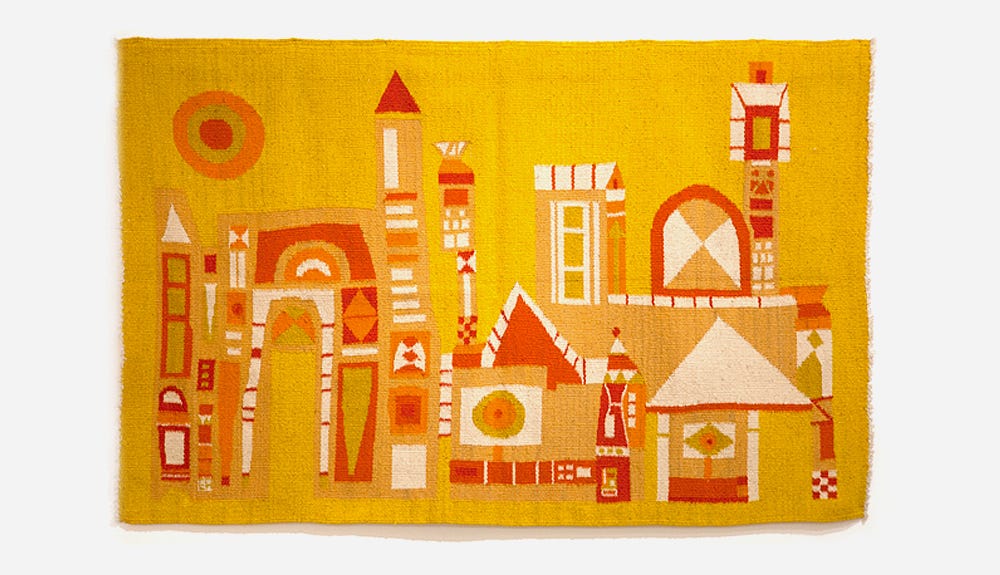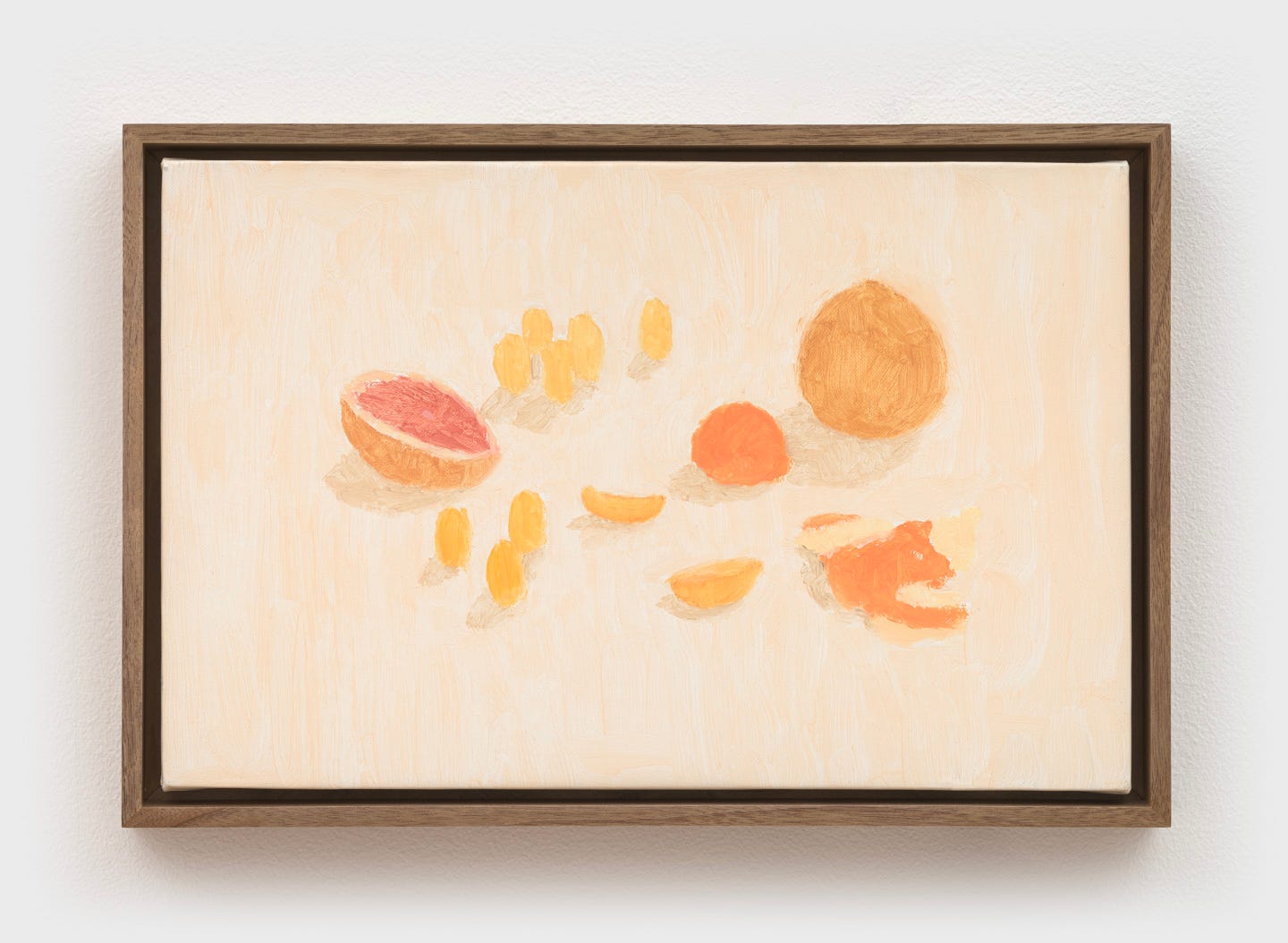Yesterday, despite the freezing downpour, I gallery-hopped through Tribeca with two artistically-inclined friends. There were a few shows we wanted to see, but really we were wandering, ready to discover something exciting and different and new. By now I’ve gotten pretty good at looking at a painting or installation and making a gut judgment: I love it or I don’t care…sometimes I hate it. My gut judgment tends to last upon closer inspection, though I’m pretty willing to admit when I’ve changed my mind. Sometimes I’ll warm to a painting I thought was garish or self-important at first glance, and occasionally a few extra seconds of inspection will force me to betray something I initially found bold, smart, or engaging.
I turned 25 last week (brag), and as my prefrontal cortex solidifies, it’s nice to feel like I have a handle on my own personal taste, my ‘eye.’ I know what I like, I know what I don’t like, and I can generally figure out why. Even more, those closest to me have started to pick up on it as well. Yesterday, as I looked at Nina Silverberg’s small, precise paintings of gloves, books, and empty archways on view at 1969 Gallert, I was entranced by their warm colors, crisp lines, and repetition of symbolic motifs. My friend Eve turned to me and whispered, “these are so you.” How did she know???
(((Before I say anymore about personal taste, I want to acknowledge a passage from Henry Jenkins’ book Textual Poachers which blew my mind when I first encountered it in college. Jenkins concisely considers the relationship between popular “taste” and social power in a way that is as damning as it is riveting.In his own words:
“Concepts of ‘good taste,’ appropriate conduct, or aesthetic merit are not natural or universal; rather they are rooted in social experience and reflect particular class interests…these tastes often seem ‘natural’ to those who share them precisely because they are shaped by our earliest experiences as members of a particular cultural group, reinforced by social exchanges, and rationalized through encounters with higher education and other basic institutions that reward appropriate conduct and proper tastes. Taste becomes one of the most important means by which social distinctions are maintained and class identities are forged. Those who ‘naturally’ possess appropriate tastes ‘deserve’ a privileged position within the institutional hierarchy and reap the greatest benefits from the educational system, while the tastes of others are seen as ‘uncouth’ and underdeveloped.”
Excuse the long quotation, but I find this argument fascinating, and probably worth its own newsletter, but I think it enriches any conversation about taste and culture.)))
ANYWAYS, Eve was right. Those paintings were ‘so me.’ Somehow, she had looked at them and seen my interests synthesized. It helps that she and I are often museum buddies, and have spent a lot of time looking at art together. In that moment, I realized I had done the exact same thing to her at the last gallery. As we entered Nicelle Beauchene gallery and took in their show of Silas Borsos’ delightfully cheeky still lifes, I said “oh these have Eve written all over them.” I was right.
Our third gallery hopper, Charlie (other Charlie🙄) was not immune either. At Bortolami Gallery, he was entranced by Philip Pearlstein’s massive nude paintings made in the 70’s and 80’s. Eve and I confided in each other that the paintings were a little bit lost on us, but as Charlie talked more about them, we could appreciate why he liked them, and see what he was drawn to. All we had to do was look through his eyes.
There’s an amazing intimacy to knowing someone well enough to see the world through their eyes, and have their taste and ‘lens’ in your own toolkit. How lucky am I to have people in my life who can look at the world and see not just for themselves, but see for me as well? To have their perspectives in my back pocket? When you start to look for other people, the world opens up. You’re forced to decenter your own point of view, and realize that just because you don’t personally like something doesn’t mean it’s not likable or good. More than that, you get to see those you care about in everything; when a painting reminds you of someone you love, that colors your experience and understanding of it—the art literally changes, grows, expands, in that personal moment of meaning making.
Perhaps most thrilling of all is when you realize you’ve gotten it wrong. When you say “I know you’re gonna love this,” and then in fact they don’t. It can be shocking, jarring, humiliating, devastating, but ultimately it’s an opportunity to learn even more about them, to further explore their complexity, and know them even better; it’s a chance to deepen your relationship even further. (As I like to say, every time you feel stupid, it means you just got smarter.) These moments equally serve as reminders of the mysteries of art and humanity. We are not aesthetic machines who can see three things we generally like put together on a canvas and churn out instant appreciation. Sometimes we don’t know why we like things, or why we don’t. Yet again it becomes an opportunity to see, to think, to wonder, a little bit deeper.
I love that I can see the bright pinks and vibrant energy of a Matisse painting or a blooming rhododendron bush and instantly think of my sister and her love for bold color and delicate beauty. Anytime a painting depicts a mother holding her child, I have no choice but to send a photo to my bestie Morgan, a labor and delivery nurse, who loves babies almost as much as she loves the motif of the Madonna and Child. Impressionistic paintings of cloudy beaches and lush greenery remind me instantly of my parents, and their cherished collection of art that filled my home growing (see my mea culpa about taste and privilege above🙄.) When a pristine architectural interior comes across my Instagram explore page, you know that is going to be messaged directly to my brother for his vision board. A Tiktok clip of Liza Minelli on stage in her prime? That’s for bestie Caroline.
That little moment with Eve, a moment of being seen outside of myself in such a special and intimate way, really stuck with me as I processed the hundreds of paintings I saw yesterday. I just really love art ultimately and continue to be floored by all of the new avenues through which it can impact my life, my thoughts, my relationships, and my ways of seeing and being. NOW IT’S TIME FOR YAWLL TO GO LOOK AT SOME PAINTINGS OKAYYYY.
four more quick things…
here’s what I’m into rn…
Joni Mitchell back on Spotify
Tbh I haven’t totally looked into why Joni Mitchell and Neill Young dropped their weapons against Spotify and the insanity of the streaming model’s approach to compensating artists for their work. I have a feeling the details will be devastating. That being said, perhaps the only thing more devastating than corporate takeover is the lyric “you’re in my blood like holy wine/ you taste so bitter and so sweet/ I could drink a case of you and still be on my feet.” from “A Case of You” on Joni’s 1971 masterpiece album “Blue.” Earlier today while out on a walk I thought to myself, why have I been on the verge of tears all weekend?, and then I looked down at my phone and remembered.
Clockwatchers (1997)
I finally watched this film, directed by Jill Sprecher, after years of John Early begging me to, and I really wish I had listened to him sooner. This perfect little film stars Toni Collette, Parker Posey, Lisa Kudrow, and Alanna Ubach as four young women brought together as nearly anonymous temps at an equally anonymous corporate office, brought together by their yearning for lives more exciting, more meaningful than office work. As they become close, they also start to realize they don’t know each other at all, and a small office scandal starts to tear them apart. Almost three decades later, it feels eerily relevant to our current age of corporate streamlining, outsourcing, and dehumanization of workers. Not to mention all of the performances are perfect and the fashion is great and Toni Collette I would die for you as usual. Parker Posey is a standout (shocker,) and if this whets your appetite for her 90’s Indie It Girl-dom, I recommend checking out Party Girl (1995) and The Daytrippers (1996) next. What a three year run!
Silas Boros’ “Fruit Theater” at Nicelle Beauchene Gallery
I mentioned this show in the manifesto above, but wanted to reinforce just how charmed I was by this whimsical still lifes, painted on linen, in which the subjects depicted (mainly fruit) almost seem to be playing with each other, or posing for the camera. Among my favorites of the bunch were Marmalade Muses (above) and Green Orchestra (at the top of the newsletter). They’re on view through April 6. Go go go!
Dawn going home on Drag Race
Sorry to play into my worst hater tendencies but I have honestly been waiting for this since the premiere…Morphine wanted that twink obliterated.
Thanks for reading Context Clues! If you like what I have to say, subscribe and forward to a friend! And if you hate what I have to say also please subscribe and forward to a friend…a healthy society needs criticism…








the passage on taste feels like something i’ve been trying to put into words for so long. this was lovely charlie